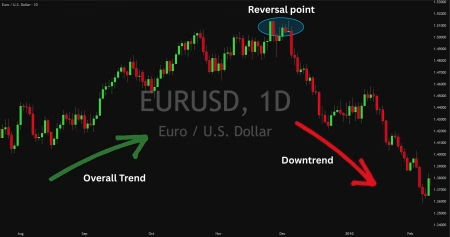Hedging in Trading in the world of finance, market changes can be as unpredictable as the weather. Keeping your investments safe is key. Hedging is a strategy that helps protect your money from market risks.
Key Takeaways
- Hedging is a risk management strategy that helps offset losses in investments by taking an opposite position in a related asset.
- Hedging strategies often involve the use of derivatives, such as options and futures contracts.
- Hedging can reduce your exposure to various risks, though it may also lead to a decrease in potential profits.
- Understanding the concept of hedging and its practical applications is crucial for investors seeking to protect their portfolios.
- Effective hedging strategies can help minimize losses during market downturns and provide a safety net for your investments.
What is Hedging?
Hedging is a way to protect your investments from big losses. It’s like buying insurance. The goal is to avoid big losses, not to make a lot of money.
Understanding the Concept of Hedging
Hedging uses special tools called derivatives, like options and futures contracts. These tools help balance out losses and gains. By using hedging, you can reduce your risk and limit losses, but you might miss out on some gains.
Derivatives, such as options, are key in hedging strategies to manage risk. Spreading investments across different markets is another common strategy. Companies often use derivatives to protect against price changes in things like fuel or key ingredients.
| Hedging Benefit | Percentage of Investors Using |
|---|---|
| Risk Reduction | 70% |
| Portfolio Insurance | 55% |
| Volatility Management | 45% |
Hedging helps manage risks and protect investments. It might limit your gains but keeps losses in check. Derivatives offer clear prices for future goods, like setting prices for commodities.
“A wrong analysis in hedging strategies can lead to unexpected outcomes and financial risks.”
For long-term investors, hedging might not be needed. They focus on the big picture, not short-term changes. But for active traders, hedging can help manage risks. It’s important to think about the costs and how it affects your investments.

Hedging has its downsides, like lower returns and costs. You need to think carefully about the benefits and drawbacks. Investors must decide if the risk reduction is worth the possible loss of gains.
Importance of Hedging in Investing
Hedging is key for investors to manage risks. It helps shield against market corrections and short-term volatility. By using hedging, investors can protect their portfolios from big losses during market ups and downs. They can still enjoy the benefits of market growth.
For those with a diversified portfolio, hedging is especially useful. It helps reduce the risk of the whole portfolio, not just one investment. Knowing how to hedge can help investors deal with market uncertainties and keep their investments safe.
Statistics show that investing always involves risk. Buying a put is a common hedge used by investors. In one example, Jack bought 20 puts on ABC1 Corp. at a strike price of 50 dollars for 3 dollars each, spending 6,000 dollars. When the stock fell to 40 dollars, Jack made 94,000 dollars, a big gain compared to the 14,000 dollar loss without the hedge.
Hedging can also help with currency risk in international trade. It ensures stability in cross-border deals and helps with financial planning. Businesses can use forward contracts, options, and swaps to manage currency risks and keep their profits safe.
In summary, hedging is crucial for investors to protect against market ups and downs. It helps keep the value of investment portfolios safe. By using smart hedging strategies, investors can face market uncertainties with more confidence and security.
Common Hedging Strategies
In investing, smart traders know the value of hedging. One top strategy is diversifying your portfolio. This means spreading your money across different types of investments. It’s based on Modern Portfolio Theory (MPT), created by Nobel winner Harry Markowitz.
MPT looks at how different investments move together. It uses stats to find the best mix of risk and return. This way, you can have a portfolio that grows but is less affected by market ups and downs.
The secret to good diversification is knowing how investments relate to each other. Investments that don’t move together can balance each other out. This is key to MPT, helping you find the right mix of investments for your goals.
“Diversification is the only free lunch in finance.”
– Harry Markowitz, Nobel Laureate in Economics
Using portfolio diversification and MPT can protect your investments from market surprises. It reduces risk and can lead to growth. This lets traders move through the financial world with confidence.

Hedging in Trading Using Derivatives
In trading, investors look for ways to shield their investments from market downturns. Derivatives trading, which includes options and futures, is a key strategy. These tools are crucial for hedging strategies that reduce risk management worries.
Options give investors the right to buy or sell an asset at a set price. This helps limit losses and protect investments. Futures contracts allow traders to secure a future price for a commodity or asset. This shields against price swings.
Using derivative instruments, investors can craft strategies where losses in one investment are offset by gains in the derivative. This approach hedges positions and cuts down overall portfolio risk. The flexibility and risk control offered by derivatives make them a favorite among investors looking to safeguard their investments.
| Derivative | Description | Hedging Application |
|---|---|---|
| Options | The right, but not the obligation, to buy or sell an underlying asset at a pre-determined price. | Limit downside exposure and protect positions. |
| Futures Contracts | Enable locking in a specific price for a commodity or asset in the future. | Safeguard against price volatility. |
Derivatives trading is vital for managing risks like foreign exchange, interest rates, or commodity prices. It offers a flexible toolkit for investors to handle hedging strategies and tackle financial market complexities.
Index Options for Portfolio Hedging
Investors looking to protect their portfolios can find value in index options. Options on indexes like the S&P 500 help hedge entire portfolios. These options are weighted by market value and focus on large-cap stocks.
Index options come with benefits like favorable tax treatment and cash settlement. They also offer leverage. By buying put options, investors can protect against market downturns. This helps keep the value of their diversified holdings safe.
The cost of index options depends on the perceived risk and market conditions. Put options can cap losses, making them a cost-effective hedge. Only 7% of options are exercised, showing they’re mainly used for hedging.
The ratio put spread is a popular hedging strategy. It involves buying and selling put options at different strike prices. This can offer protection at a lower cost.
Long-term equity anticipation securities (LEAPS) are also useful for long-term hedging. They have longer expiration dates, making them cheaper than short-term options.
Choosing to use index options for hedging depends on several factors. Investors must consider the level of protection needed, the portion of the portfolio to hedge, and the budget. By carefully evaluating these, investors can use index options to reduce the impact of market downturns.
Weighing the Costs and Benefits
Investors must think carefully about the hedging costs and benefits. Hedging involves buying financial instruments like options or futures. These come with a premium or transaction costs.
These costs are like the “price of insurance” against market downturns. But, they also mean less potential profits if the investment does well.
Investors need to decide if the hedge’s cost is worth the risk reduction it offers. They must consider if it helps minimize losses during market ups and downs. The hedge’s ability to offset portfolio declines is key, as is its effect on portfolio protection and risk-return.
Research shows that the cost of hedge accounting is a big deal for treasury teams. Mistakes can come from the complexity of accounting standards. This can lead to less-than-ideal hedging programs.
Negotiating ISDA agreements is also a big task for treasury teams. Legal and external counsel costs can be in the tens of thousands of dollars.
For U.S.-based firms, regulatory compliance costs are hidden. They require constant activities to follow ISDA protocols and other rules. The Dodd-Frank Act demands bank counterparties to offer “mid” market pricing. Yet, there’s no advisor to ensure fair pricing.
In the end, it’s important to look at all costs in strategy, pricing, legal, and accounting areas. This helps find the most cost-effective mix of internal and external resources for a compliant and effective hedging program.
Volatility and the “Fear Index”
Investor sentiment and market volatility greatly affect hedging costs and effectiveness. The Cboe Volatility Index (VIX), known as the “fear index,” shows the average 30-day implied volatility of S&P 500 options. When the VIX is high, hedging costs go up. But when it’s low, hedging becomes cheaper.
Using the VIX to Gauge Market Volatility
Watching the VIX helps investors understand future market volatility. This knowledge aids in choosing the right hedging strategies to safeguard their portfolios. As of May 10, 2024, the U.S. market’s daily options trading volume is $16.6 billion. This shows how crucial derivatives are in managing volatility.
The VIX tracks the implied volatility of S&P 500 index options. A VIX under 20 means low volatility. But a reading of 30 or more signals high volatility. This “fear index” offers insights into investor mood and volatility trends. It helps traders and investors make better portfolio hedging choices.
“The VIX operates as a real-time index that reflects market participants’ expectations of volatility over the next 30 days, providing a measure of market risk and investor sentiment.”
Limitations of Hedging Strategies
Hedging can help manage risk, but it’s not perfect. It can’t remove all market risk. Investors need to know its limits. Getting a perfect hedge is hard because unforeseen events can affect it.
The cost of maintaining a hedge can also lower returns. Trying to time the market and use hedges can be risky. It’s based on guessing future market moves, which is hard to do.
It’s key for investors to know the downsides of hedging. Imperfect hedges and hedging limitations can cause surprises. This shows why understanding these strategies well is important.
| Limitation | Impact |
|---|---|
| Unforeseen Events | Hedge effectiveness can be impacted by unexpected market conditions or occurrences, leading to suboptimal results. |
| Hedging Costs | The expenses associated with maintaining a hedge can reduce overall portfolio returns, even when the hedge is not ultimately needed. |
| Market Timing | Attempting to time the market and implement hedges based on predictions of future volatility can be an unreliable approach, potentially leading to missed opportunities. |
Hedging is still a good way to manage risk, but investors must know its limits. By understanding these, investors can make smarter choices. This helps them deal with the financial market’s complexities better.
Conclusion
Hedging is a key tool for managing risk. It helps protect your investments from market ups and downs. By using hedging strategies like diversification and options, you can reduce losses. But remember, hedging can also cut into your gains.
Understanding hedging techniques is crucial. It helps you make smart choices in the financial markets. With hedging strategies, you can handle market volatility and keep your investments safe. This way, you’re set for success in the changing financial world.
Adding hedging strategies to your portfolio is wise. It’s good for portfolio protection and reaching your financial targets. Stay updated and adjust your strategy as the market changes. This way, you can confidently manage your investments and secure your financial future.
FAQ
What is hedging in trading?
How does hedging work?
Why is hedging important for investors?
What are common hedging strategies?
How can derivatives be used for hedging?
How can index options be used for portfolio hedging?
What are the costs and benefits of hedging?
How does market volatility affect hedging strategies?
What are the limitations of hedging strategies?
Source Links
- Beginner’s Guide to Hedging: Definition and Example of Hedges in Finance – https://www.investopedia.com/trading/hedging-beginners-guide/
- How to Hedge Against an Event-Driven Correction – https://www.schwab.com/learn/story/how-to-hedge-your-portfolio
- Hedge Definition and How It Works in Investing – https://www.investopedia.com/terms/h/hedge.asp
- What Is Hedging? Definition And How It Works | Bankrate – https://www.bankrate.com/investing/what-is-hedging/
- Hedging – https://corporatefinanceinstitute.com/resources/derivatives/hedging/
- What is hedging & how it works in investing – https://www.td.com/ca/en/investing/direct-investing/articles/hedging
- Part I: The Significance of Portfolio Hedging – https://www.proshares.com/browse-all-insights/insights/part-i-the-significance-of-portfolio-hedging
- The Importance of Currency Hedging in Trade Finance: Mitigating Risk in International Transactions – – https://blog.financely-group.com/the-importance-of-currency-hedging-in-trade-finance/
- Hedging strategies – https://www.cmcmarkets.com/en/trading-guides/hedging-strategies
- What is hedging? | Advanced trading strategies & risk management | Fidelity – https://www.fidelity.com/learning-center/trading-investing/hedging
- How Companies Use Derivatives To Hedge Risk – https://www.investopedia.com/trading/using-derivatives-to-hedge-risk/
- Hedging with Derivatives: Effective Strategies for Managing Financial Risk – https://www.swastika.co.in/blog/hedging-strategies-using-derivatives
- How Do Hedging Strategies Work? – https://gocardless.com/guides/posts/how-do-hedging-strategies-work/
- How To Use Put Options as a Hedging Strategy – https://www.investopedia.com/articles/optioninvestor/07/affordable-hedging.asp
- Hedging Portfolio Risk with Mini Index Options – https://www.cboe.com/insights/posts/hedging-portfolio-risk-with-mini-index-options/
- The True Cost of Hedging – https://www.chathamfinancial.com/insights/the-true-cost-of-hedging
- What is Hedging & How Does it Work? – https://www.tastylive.com/concepts-strategies/hedging
- The Most Effective Hedging Strategies to Reduce Market Risk – https://www.investopedia.com/ask/answers/050615/what-are-most-effective-hedging-strategies-reduce-market-risk.asp
- The Value of Investing in the Volatility Index as a Hedge | StableBread – https://stablebread.com/the-value-of-investing-in-the-volatility-index-as-a-hedge/
- Fear Index I What is the VIX and how do you trade it? – https://capex.com/en/academy/vix-fear-index
- The Advantages and Disadvantages of Hedging Strategies – https://imarticus.org/blog/the-pros-and-cons-of-hedging-strategies/
- The Pros and Cons of Hedging Forex Strategy for Treasurers – https://www.linkedin.com/pulse/pros-cons-hedging-forex-strategy-treasurers-françois-masquelier-n1yge
- What Is Hedging? Examples of Hedging – https://www.peakframeworks.com/post/hedging-financial-strategy
- What Is Hedging: Hedging Meaning, Types & How Does It Work | 5paisa – https://www.5paisa.com/stock-market-guide/stock-share-market/hedging-in-stock-market








